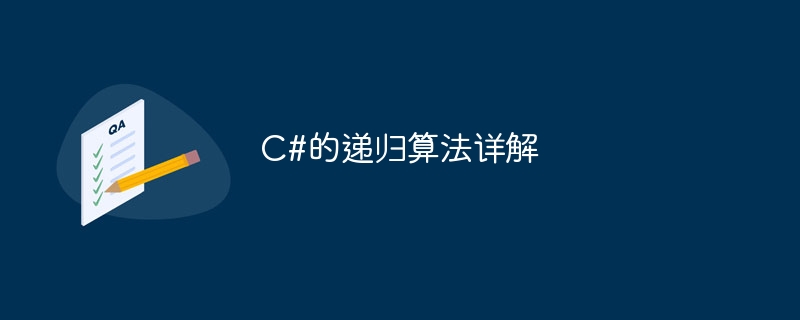

Detailed explanation of the recursive algorithm in C#, specific code examples are needed
1. What is the recursive algorithm?
Recursion refers to a situation where a function or method calls itself during execution. Recursive algorithms are a common problem-solving method in programming. It decomposes a problem into one or more sub-problems that are similar to the original problem but smaller in size, and then solves the original problem by solving these sub-problems. Recursive algorithms are often used to solve repetitive problems.
2. How to implement recursive algorithms
In C#, there are two main ways to implement recursive algorithms: direct recursion and indirect recursion.
class Program { static int GetFactorial(int n) { if (n == 0 || n == 1) { return 1; } else { return n * GetFactorial(n - 1); } } static void Main(string[] args) { int n = 5; int factorial = GetFactorial(n); Console.WriteLine("{0}的阶乘是:{1}", n, factorial); } }
In the above code, theGetFactorialmethod calculates the factorial by continuously calling itself. Whennis equal to 0 or 1, the recursion terminates, otherwise the recursive call continues.
class Program { static int Fibonacci(int n) { if (n == 0) { return 0; } else if (n == 1) { return 1; } else { return Fibonacci(n - 1) + Fibonacci(n - 2); } } static void Main(string[] args) { int n = 6; int result = Fibonacci(n); Console.WriteLine("斐波那契数列的第{0}项是:{1}", n, result); } }
In the above code, theFibonaccimethod calculates the Fibonacci sequence by calling itself The value of the nth item in . The recursion terminates when n equals 0 or 1, otherwise the recursive call continues.
3. Advantages and Disadvantages of Recursive Algorithm
Recursive algorithm has the following advantages:
However, the recursive algorithm also has some disadvantages:
Therefore, when using recursive algorithms, you need to pay attention to the number of recursive levels and problem size, as well as reasonable handling of recursive termination conditions to avoid resource waste and performance problems.
Summary:
Recursive algorithm is a common method to solve problems by decomposing the problem into sub-problems to solve the original problem. In C#, there are two ways to implement recursive algorithms: direct recursion and indirect recursion. Recursive algorithms have the advantages of concise code and easy understanding, but they also have the disadvantages of large memory overhead and low efficiency. Therefore, when using recursive algorithms, it is necessary to reasonably handle the recursive termination conditions and evaluate the problem size to ensure the correctness and efficiency of the algorithm.
The above is the detailed content of A Deep Dive into Recursive Algorithms in C#. For more information, please follow other related articles on the PHP Chinese website!




